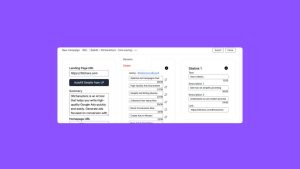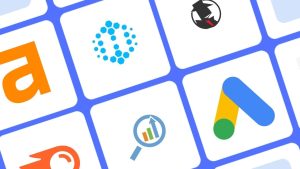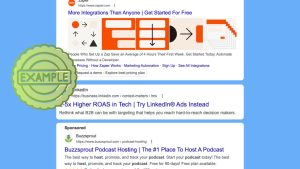I’ve used Target CPA (tCPA) in dozens of campaigns over the years, and while it can be one of the most powerful bidding strategies in Google Ads, it only works if you approach it with the right expectations and timing.
If you’re evaluating whether tCPA is the right fit, here’s how I think about it and what I recommend to clients.
Table of Contents
- What is Target CPA?
- How does tCPA work?
- Target CPA vs Maximize Conversions
- When to use Target CPA
- When not to use it
- Does Target CPA Work Better With Larger Budgets?
- Understanding the Learning Phase
- What should your tCPA target be?
- How to Structure a Campaign for Target CPA
- What to Do if Target CPA Isn’t Working
- Target CPA vs Target ROAS
What is Target CPA?
Target CPA is a Smart Bidding strategy in Google Ads where you tell Google the amount you’re willing to pay for a conversion. Google then automatically adjusts your bids in each auction to try and get you as many conversions as possible at or below that target.
You’re not setting individual keyword bids. You’re setting an outcome, Google handles the rest.
How does tCPA work?
Google uses machine learning to predict which auctions are likely to convert based on historical data and real-time signals: device, time of day, search intent, location, and more.
If a search looks promising, Google bids more aggressively. If it doesn’t, bids are lowered or skipped. All of this happens in real time, every time your ad is eligible to serve.
It’s not perfect, but when fed with enough conversion data, it can outperform manual bidding or even other Smart Bidding strategies.
Target CPA vs Maximize Conversions
These two often get confused, so here’s how I differentiate them:
- Maximize Conversions: Spend your budget to get the most conversions, regardless of cost per conversion.
- Target CPA: Stay within a target cost per conversion, even if that means fewer total conversions.
If I’m in the testing or learning phase, I’ll usually start with Manual CPC to build volume and let Google gather data.
Once I have stable conversion volume and know my acceptable CPA, I’ll switch to tCPA to control costs while scaling.
When to use Target CPA
Target CPA works best when:
- You have consistent conversion volume (ideally 30–50 conversions in the past 30 days)
- Your conversion tracking is accurate and meaningful
- You have a clear idea of your acceptable CPA
When those three things are true, tCPA can help you maintain efficiency while increasing scale, especially in competitive auctions.
When not to use it
You’ll want to avoid tCPA if:
- Your campaign is new and has no conversion history
- Your conversion tracking is unverified or tied to low-value events
- Your CPA is still fluctuating heavily from day to day
In these cases, forcing Google to hit a target before it has enough data will restrict delivery and slow down learning.
Start with Maximize Conversions, then transition to tCPA once performance stabilizes.
Does Target CPA Work Better With Larger Budgets?
In my experience, Target CPA performs best when the budget gives the algorithm enough room to test, fail, and learn.
Strict budget caps can choke performance. If you set a daily budget that’s too close to your target CPA, Google doesn’t have the flexibility to explore which clicks are worth bidding on.
Here’s a simple rule I follow:
- Daily budget should be at least 3x–5x your target CPA
So if your tCPA is $50, I’d aim for a $150–$250 daily budget. That gives the system enough volume to learn quickly and optimize bids across a wide range of signals.
Does more budget = better performance?
Not always. It’s less about having a large budget, and more about having enough budget to get consistent conversions.
- If your campaign is converting steadily, Target CPA can work with modest budgets.
- But if your volume is low (e.g., 1–2 conversions per day), performance will fluctuate, and learning will take longer.
I’ve run tCPA on both lean and generous budgets. What matters most is that your budget allows for steady conversion volume without constantly hitting your cap by noon.
If I’m seeing early success with tCPA, I’ll often increase budget before lowering the target. That gives Google more to work with while keeping cost efficiency in check.
Understanding the Learning Phase
Whenever you launch a new campaign or switch to Target CPA, Google enters what it calls the “learning phase.” This is the period where the algorithm is testing different bids and placements to figure out what works best for your goals.
Here’s what I’ve seen in practice:
- The learning phase usually lasts 7 to 10 days, depending on how much data you’re generating.
- During this time, performance may fluctuate. Costs might spike, and conversions may drop.
- It’s tempting to intervene but the best move is to wait. Changing budgets, ads, or CPA targets mid-learning just resets the clock.
Google uses this phase to gather enough data to optimize bids confidently. If you let it complete, the algorithm usually stabilizes and improves from there.
I’ve learned to watch, not react. Give it time to work with enough signals. If after two weeks you’re still seeing erratic results with no trend toward stability, that’s when I’ll reassess.
How to Help the Learning Phase
- Use historical data: If you’re switching from Maximize Conversions and already have solid volume, the learning phase will be shorter.
- Don’t over-segment early: Consolidate where needed so each campaign or ad group gets enough data to optimize.
- Avoid low-volume targets: If your tCPA is too low or your audience too narrow, Google won’t have enough auctions to learn from.
The learning phase is a feature, not a bug. If your campaign is well-structured and tracking is clean, Target CPA tends to get better with time.
What should your tCPA target be?
This is one of the most common mistakes I see, setting the target CPA based on a goal, not on data.
Here’s what I recommend:
- Look at your average CPA over the last 30 days in that campaign or ad group
- Set your initial tCPA target slightly higher than that number by 10–20%
- Once performance stabilizes, you can gradually reduce it
Trying to set a target too low too early will just choke your traffic. Give the algorithm space to optimize, then refine over time.
How to Structure a Campaign for Target CPA
Target CPA works best when it has clear, consistent signals to learn from. Over time, I’ve found that the structure of your campaign can make or break performance with automated bidding.
Here’s how I approach it:
1. Group by Intent, Not Just Keywords
I avoid stuffing too many different themes or intents into a single campaign or ad group. The more focused the ad group, the more consistent the conversion behavior, this helps Google learn faster.
For example:
- Don’t mix competitor terms, generic terms, and bottom-of-funnel product terms in the same campaign.
- Break them out so each group can hit its own performance benchmarks.
2. Limit the Number of Conversions You’re Optimizing For
If your conversion action is too broad or if you’re optimizing for multiple actions (e.g. “page view” + “form fill” + “demo booked”), you’ll confuse the algorithm.
I stick to one primary, high-signal conversion action per campaign. That usually means a qualified lead or completed purchase, not micro-conversions.
3. Use Separate Campaigns for Different Goals
If you’re running both lead gen and brand awareness, don’t mix them into the same campaign. Same goes for different geographies or buyer types.
The more predictable your conversion behavior, the more successful tCPA will be.
What to Do if Target CPA Isn’t Working
Sometimes, even with clean data and decent volume, tCPA just doesn’t deliver. If you’re not getting conversions or they’re way above your target, here’s how I troubleshoot.
1. Check your landing page conversion rate
This is the first place I look. If your landing page isn’t converting well, no bidding strategy will fix that.
- Is the page relevant to the keywords or ad group?
- Does it load fast and work well on mobile?
- Are you asking too much up front (e.g. long forms, unclear CTA)?
- Is there a clear, singular action you want the user to take?
If your Google Ads CTR is strong but conversion rate is weak, that’s almost always a landing page issue not a bidding issue.
2. Compare actual CPA vs. target
If your real CPA is $100 and you’re asking Google to hit $40, you’re setting yourself up for failure. I always base my initial tCPA target on the past 30-day average, then optimize down slowly.
3. Look at conversion tracking
Bad or misfired tracking is more common than people think. If conversions are undercounting or firing multiple times per user, Google’s optimization gets skewed.
Make sure:
- You’re optimizing for one primary conversion
- The tag or GA4 event is firing on the thank-you page or after true conversion
- You’ve ruled out duplicate or low-quality events (like button clicks that don’t lead anywhere)
4. Give it time or test something else
If you just switched to tCPA, don’t panic in the first few days. Let the learning phase run. But if after 10–14 days performance is still erratic, I might:
- Switch back to Maximize Conversions
- Split campaigns or ad groups for tighter control
- Revisit my offer and funnel
Target CPA is powerful, but it can’t overcome bad input signals. Whenever it stalls, I go back to the fundamentals: offer, landing page, tracking, and realistic targets.
Target CPA vs Target ROAS
If you’ve used Google Ads for ecommerce or revenue-driven campaigns, you’ve probably seen another option: Target ROAS (Return on Ad Spend).
Here’s the core difference:
- Target CPA is about cost per conversion. You’re telling Google: “Get me leads or sales at $X each.”
- Target ROAS is about the value of those conversions. You’re saying: “For every $1 I spend, I want $Y back.”
You’d typically use Target CPA when:
- You have a flat-value conversion (like a fixed-price service or a lead gen form)
- You care more about cost efficiency than revenue volume
- You don’t have revenue tracking set up in Google Ads
You’d use Target ROAS when:
- You’re tracking revenue (like ecommerce transactions)
- Your conversions vary in value (e.g. $20 orders vs $500 orders)
- You want to maximize revenue, not just conversion count
One isn’t better than the other they’re just built for different goals. I use Target CPA for lead gen and fixed-value actions. For ecommerce or when revenue varies, I switch to Target ROAS and optimize toward returns, not just volume.
| Aspect | Target CPA | Target ROAS |
|---|---|---|
| Primary Goal | Achieve conversions at a specific cost per acquisition | Maximize revenue based on a desired return on ad spend |
| Best Suited For | Lead generation, fixed-value conversions | E-commerce, variable-value conversions |
| Optimization Focus | Cost efficiency per conversion | Revenue efficiency per dollar spent |
| Conversion Value | Not required | Required; must assign values to conversions |
| Bid Strategy | Adjusts bids to meet average CPA target | Adjusts bids to meet average ROAS target |
| Ideal When | You have a clear cost per lead/sale and want predictable acquisition costs | You aim to maximize revenue and have varying conversion values |
| Data Requirements | At least 30 conversions in the past 30 days | At least 15 conversions with value data in the past 30 days |
| Common Use Cases | B2B lead generation, service sign-ups | Online retail, e-commerce sales |






